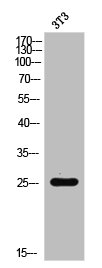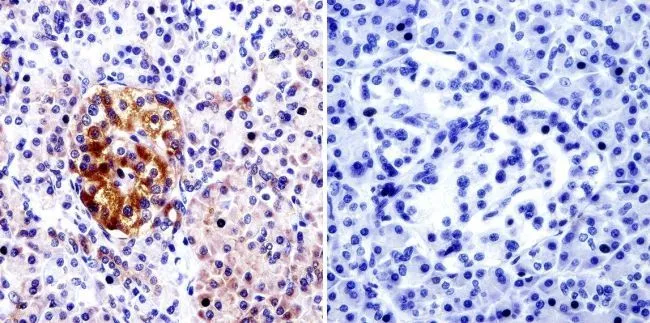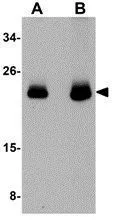CDC42 antibody
GTX134588
ApplicationsWestern Blot
Product group Antibodies
TargetCDC42
Overview
- SupplierGeneTex
- Product NameCDC42 antibody
- Delivery Days Customer9
- Application Supplier NoteWB: 1:500-1:3000. *Optimal dilutions/concentrations should be determined by the researcher.Not tested in other applications.
- ApplicationsWestern Blot
- CertificationResearch Use Only
- ClonalityPolyclonal
- Concentration1.79 mg/ml
- ConjugateUnconjugated
- Gene ID998
- Target nameCDC42
- Target descriptioncell division cycle 42
- Target synonymsCDC42Hs, G25K, TKS, cell division control protein 42 homolog, G25K GTP-binding protein, GTP binding protein, 25kDa, dJ224A6.1.1 (cell division cycle 42 (GTP-binding protein, 25kD)), dJ224A6.1.2 (cell division cycle 42 (GTP-binding protein, 25kD)), growth-regulating protein, small GTP binding protein CDC42
- HostRabbit
- IsotypeIgG
- Protein IDP60953
- Protein NameCell division control protein 42 homolog
- Scientific DescriptionThe protein encoded by this gene is a small GTPase of the Rho-subfamily, which regulates signaling pathways that control diverse cellular functions including cell morphology, migration, endocytosis and cell cycle progression. This protein is highly similar to Saccharomyces cerevisiae Cdc 42, and is able to complement the yeast cdc42-1 mutant. The product of oncogene Dbl was reported to specifically catalyze the dissociation of GDP from this protein. This protein could regulate actin polymerization through its direct binding to Neural Wiskott-Aldrich syndrome protein (N-WASP), which subsequently activates Arp2/3 complex. Alternative splicing of this gene results in multiple transcript variants. Pseudogenes of this gene have been identified on chromosomes 3, 4, 5, 7, 8 and 20. [provided by RefSeq, Apr 2013]
- Storage Instruction-20°C or -80°C,2°C to 8°C
- UNSPSC12352203
References
- Bachmann M, Rossa A, Varanita T, et al. Pharmacological targeting of the mitochondrial calcium-dependent potassium channel KCa3.1 triggers cell death and reduces tumor growth and metastasis in vivo. Cell Death Dis. 2022,13(12):1055. doi: 10.1038/s41419-022-05463-8Read this paper






